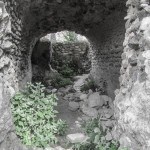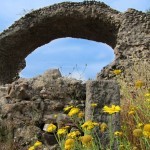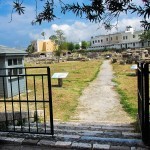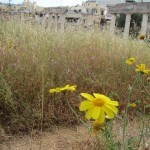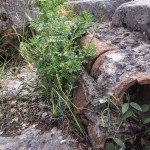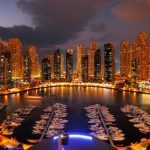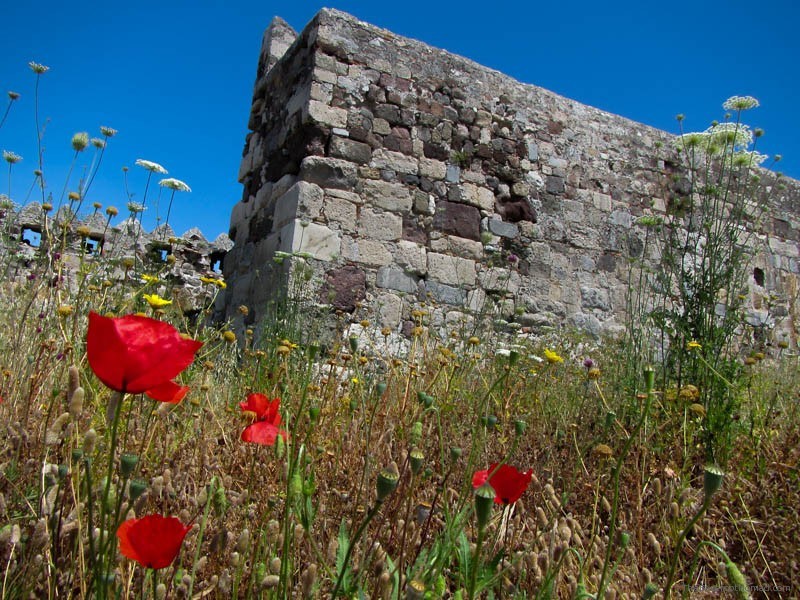
I didn’t expect the ancient ruins in Kos, Greece to be so… well … in ruins.
Coming from Spain and Portugal, we were used to castles and monuments with manned entrance booths, charging plenty of Euros to let us in. Ropes and barriers to keep us off the attractions were everywhere, and guards often stood by just in case.
This wasn’t the case in Kos.
Only the Kos Castle charged admission (a very reasonable 3 Euro for adults), though once past the gates we were allowed to roam everywhere at will, and tall grass had claimed many of the statues.
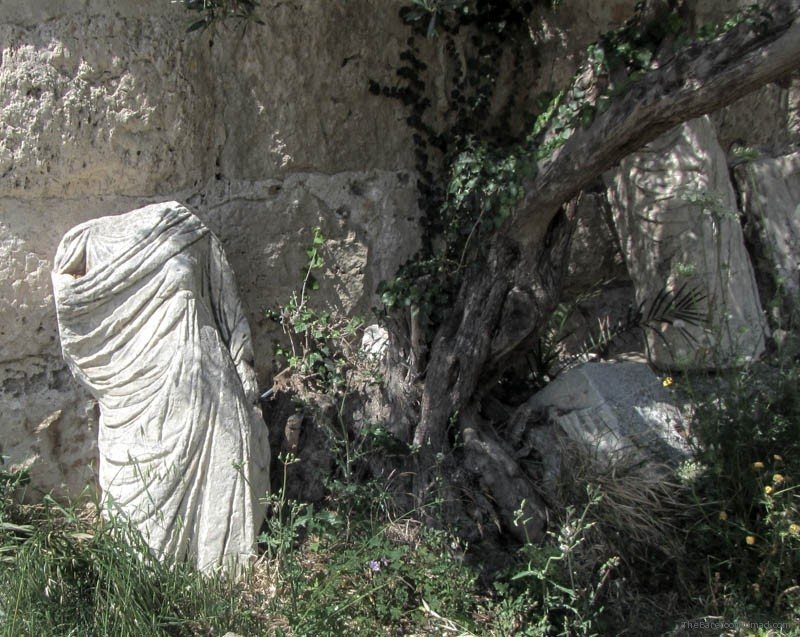
Elsewhere, in the ancient Agora, and in the temples scattered around the island, the ruins are left largely unattended.
The Agora, smack in the middle of Kos town, and next to a thriving square, was completely unattended. We wandered up to the western entrance, and were met with nothing but some fairly unhealthy looking stray cats and long, wild grass that hid most of the ruins.
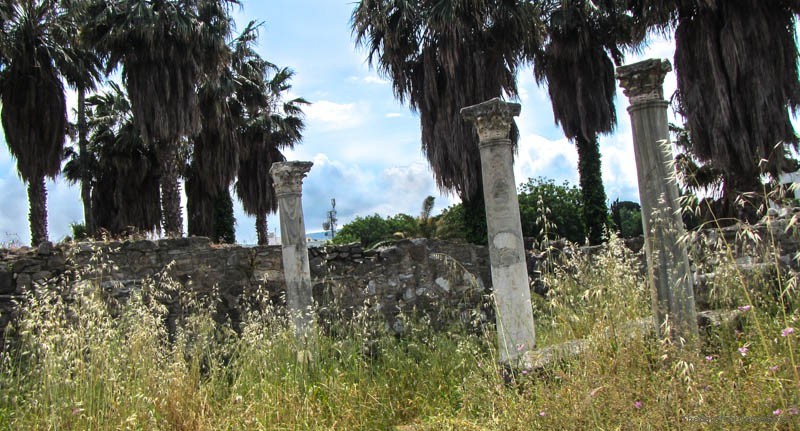
Kos’ Agora was once one of the largest in the ancient world. Here, traders met beside the Shrine of Aphrodite, the Temple of Hercules and a basilica.
The ancient Agora was flattened by an earthquake in 469 AD, and painstakingly rebuilt, only to be destroyed by an earthquake again in 1933.
Cole and Jordan climbed over ancient columns left lying on the ground in shambles by the earthquake.
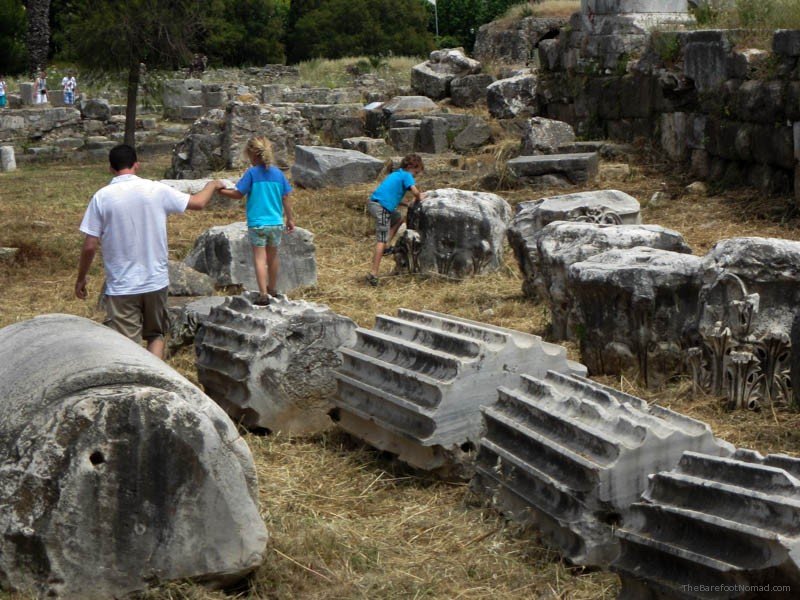
Elsewhere, a couple of lone columns stood high, balancing precariously. We stopped for just a second underneath, a bit nervous that just leaning against the columns might send them tumbling down.
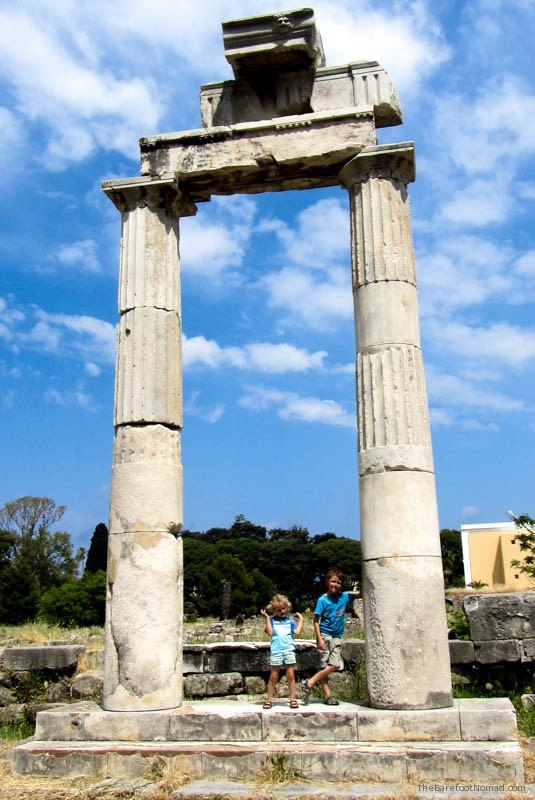
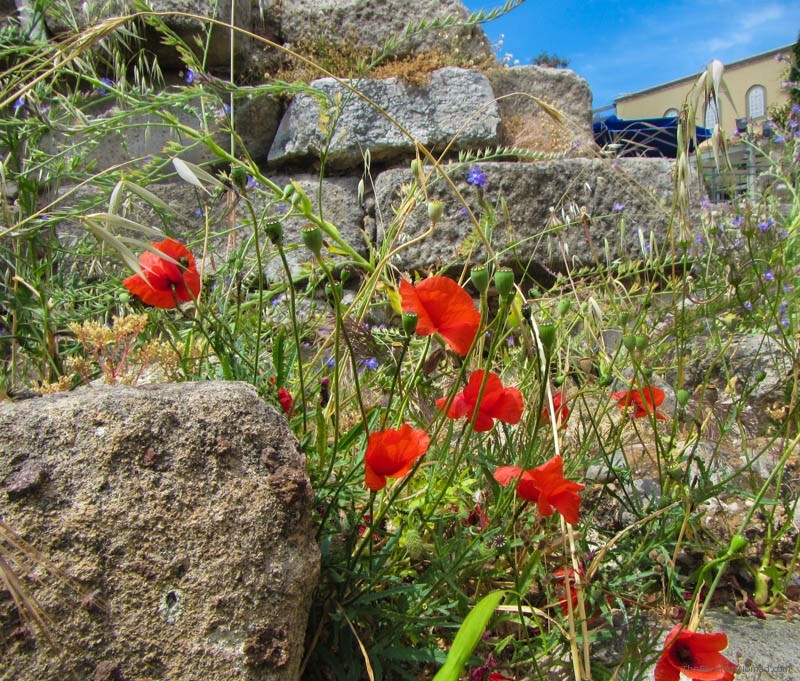
The Western Excavations, a 15 minute walk across Kos town, were just as unattended. Wildflowers sprouted everywhere and tall grass grew unchecked.
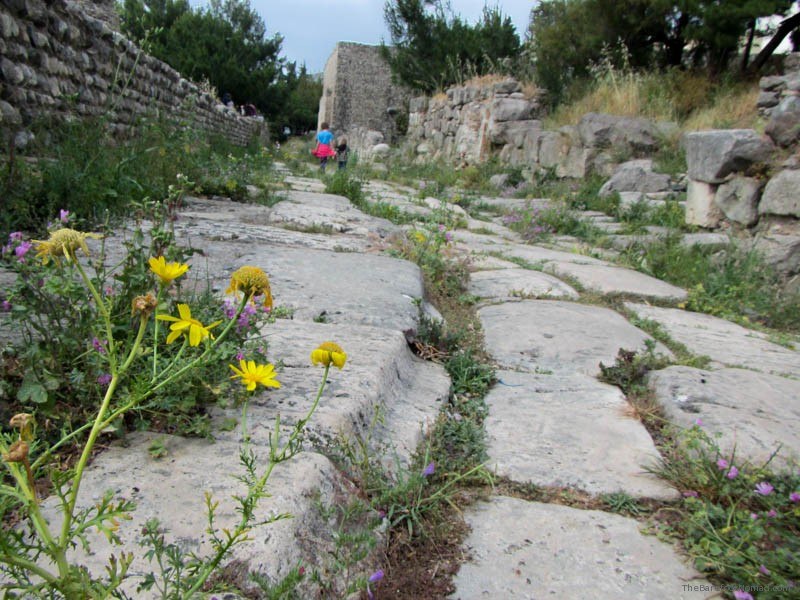
Here, plaques explaining the excavations were few and far between.
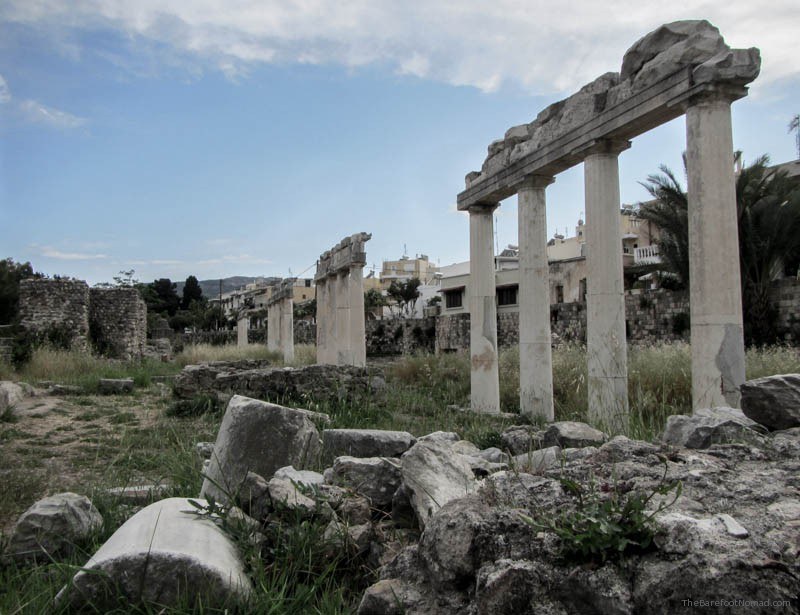
Wandering around, we discovered what have been the ancient baths mentioned by our Lonely Planet Greece guide.
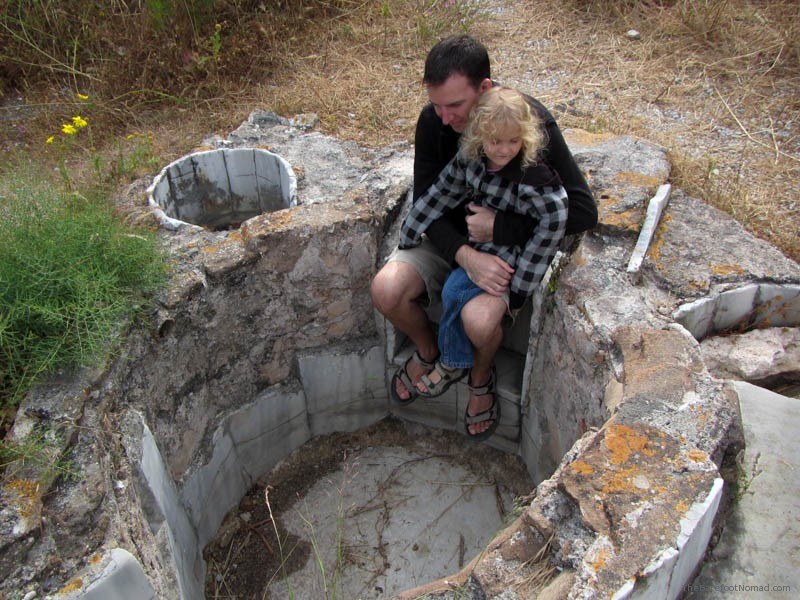
The ruins of Kos were unattended or closed almost everywhere we wandered in Kos.
At Casa Romana, a restored Roman mansion, the gates were locked for further excavations, but the grass grew tall here, and we didn’t see any evidence of recent work.
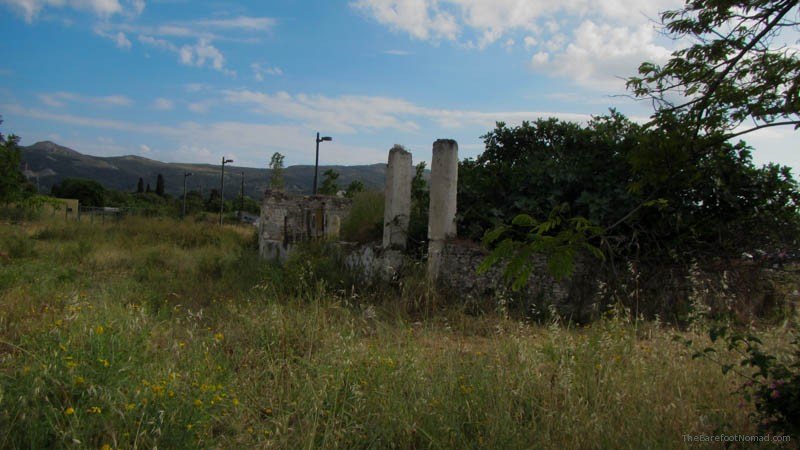
So why were the ruins largely abandoned?
Our best guess is that time, earthquakes and the economic crisis haven’t been kind to the ruins on the ancient Greek island of Kos.
Have you visited the ruins on Kos? We’d love to hear your thoughts.
What You Need To Know
About Kos: Kos is a Greek island on the far Eastern shore of Greece. It’s a stone’s throw from Bodrum, Turkey. The ruins mentioned in this post were all located in the island’s main town, Kos town.
How to Get There: Kos is served by many international airlines, including direct flights from Spain and the United Kingdom. Check airfares on Expedia.
You can also reach Kos via a ferry ride from Bodrum Turkey. The fare is about 20 Euros, and takes 20 minutes on a fast hydrofoil or 45 minutes on a slower ferry.
Finding your Way Around: Pick up a guide for Kos, or the Lonely Planet Greece, before you arrive. During the week we were there, the tourist office was closed every day.


